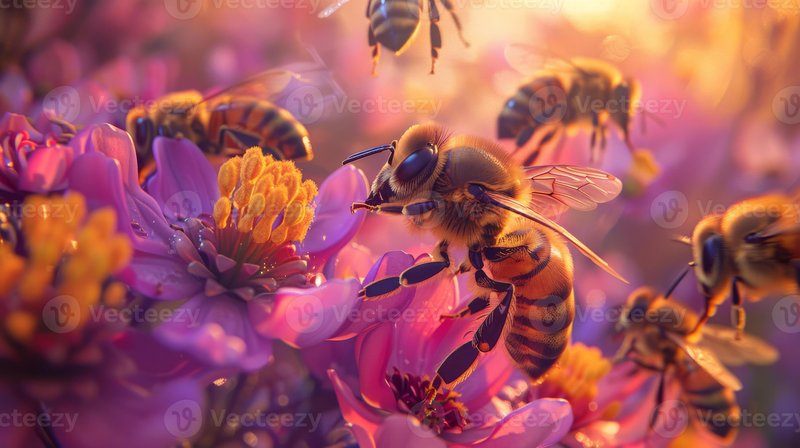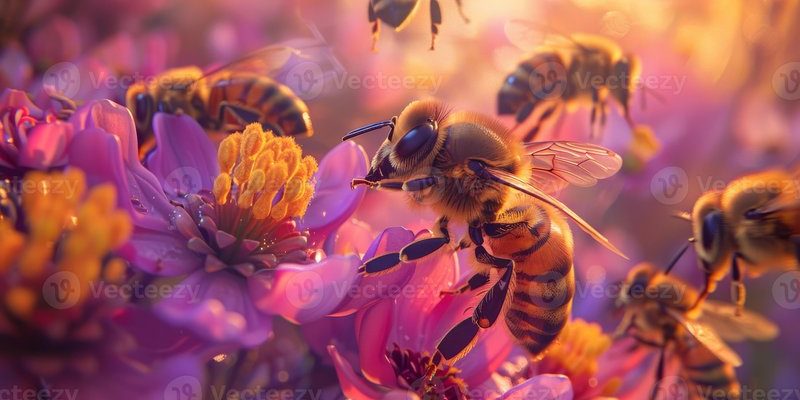
Stingless bees, mostly found in tropical regions, work tirelessly, gathering nectar and pollen. Just imagine a busy café where flowers are the tables, and stingless bees are the busy waiters, moving around, serving up the essential needs of our plants. Their pollination efforts help produce fruits, seeds, and even contribute to the beauty of our landscapes. Let’s dive into the incredible world of stingless bees and explore their essential role in pollination.
What Are Stingless Bees?
Stingless bees belong to the tribe Meliponini, and there are over 500 species globally. Unlike their more famous cousins, honeybees, they lack a stinger, which makes them a bit less intimidating. Even though they can’t defend themselves with a sting, they have some incredible adaptations that enable them to thrive in diverse ecosystems.
These bees have a strong social structure, much like honeybees. They live in colonies and work together for the greater good. With roles ranging from foragers to caretakers of the young, each bee has a part to play. They build nests in tree cavities, soil, or even inside human structures, making them quite versatile. Isn’t it fascinating how nature crafts such complex relationships?
Stingless bees are also known for their impressive communication skills. They use dances and pheromones to inform their hive mates about the best flower patches. This intricate dance of life mirrors our own social dynamics—where sharing information leads to better outcomes for everyone involved.
The Importance of Pollination
Pollination is crucial for plant reproduction. Without it, many plants wouldn’t produce seeds, fruits, or vegetables, and our food supply would crumble. Think of stingless bees as the tiny matchmakers of the plant kingdom. As they move from one flower to another, they transfer pollen, which leads to fertilization. This process ultimately helps to create the fruits and seeds that we eat.
Here’s the thing: around 75% of the world’s flowering plants depend on pollinators, like stingless bees, to reproduce. That’s a staggering amount! If these bees were to disappear, we would see a dramatic decline in the variety of fruits, vegetables, and nuts that make up our diets. This could lead to higher food prices and a less nutritious food supply.
Also, the ripple effects go beyond just our plates. Pollination supports entire ecosystems, ensuring plant diversity. This diversity provides habitats for countless other species, creating a balanced environment. By supporting one link in this chain, we maintain the health of the whole ecological web.
How Stingless Bees Pollinate
Stingless bees are natural-born pollinators. They have furry bodies that easily pick up pollen as they visit flowers. When they collect nectar, pollen gets stuck on their bodies, and when they move to the next flower, some of this pollen rubs off, fertilizing the plant.
But how do they choose which flowers to visit? Their keen sense of smell plays a huge role. They can detect floral scents from a distance. Once they arrive, they perform a little dance on the flower, which helps to shake loose even more pollen. It’s almost like they’re giving the flower a gentle boost!
Moreover, stingless bees tend to visit certain types of flowers repeatedly, which boosts the chances of effective pollination. This behavior maximizes their efforts, ensuring that plants get the pollination they need to thrive. It’s like having a favorite coffee shop—you become a regular, and they know exactly what you want!
Benefits of Stingless Bee Pollination
The contributions of stingless bees go beyond just food production. They play a significant role in maintaining plant diversity, which is crucial for healthy ecosystems. Here are some benefits of their pollination:
- Enhanced Crop Yields: Many farmers are turning to stingless bees as effective pollinators, leading to increased yields of fruits and vegetables.
- Better Fruit Quality: Fruits pollinated by stingless bees often have improved flavor and nutritional value.
- Ecological Balance: Their activity supports a range of plant species, creating habitats for other wildlife.
- Resilience to Climate Change: A diverse range of plants helps ecosystems adapt to climate change challenges.
In urban areas, stingless bees are also beneficial. They can thrive in gardens, parks, and even rooftop gardens, promoting local biodiversity in cityscapes. This means more green spaces for us to enjoy, while also contributing to the pollination of plants around us.
Threats to Stingless Bees
Unfortunately, stingless bees face numerous threats that jeopardize their crucial role. Habitat loss due to urbanization, agriculture, and deforestation strips away their natural environments. Additionally, the use of pesticides poses a significant risk to their health.
Climate change also impacts their foraging patterns and the availability of flowers. Warming temperatures can alter blooming cycles, leading to mismatches between when flowers are available and when the bees are active. This lack of synchronization can have dire consequences for pollination.
Lastly, diseases and parasites, such as the Varroa mite, can plague stingless bee populations, further threatening their survival. If we want to keep these vital pollinators around, we need to pay attention and take action.
How to Support Stingless Bees
Supporting stingless bees is crucial, and there are many things individuals can do! Here are some practical steps you can take:
- Plant Native Flowers: Choose plants that are native to your area. This gives bees the food they prefer and thrives in your local climate.
- Avoid Pesticides: Reduce or eliminate the use of harmful chemicals in your garden. If you must use pesticides, opt for organic options or apply them at times when bees are least active.
- Create Bee Habitats: Provide spaces like bee hotels or undisturbed ground where stingless bees can nest.
- Support Sustainable Agriculture: Buy from local farmers who prioritize eco-friendly practices and pollinator health.
You might be wondering how just a few actions can make a difference. Every little bit helps! By creating a friendly environment for stingless bees, you contribute to the overall health of your local ecosystem.
The Future of Stingless Bees in Our Ecosystem
The future of stingless bees is intertwined with the health of our environment. As we become more aware of their crucial role, we can take action to ensure their survival. Researchers are studying their behaviors and habitats, looking for ways to protect and support these tiny champions of pollination.
Conservation efforts are already underway in many areas, focusing on habitat restoration and community education. By fostering a relationship between humans and stingless bees, we can create a sustainable future for both. It’s a win-win!
In summary, stingless bees are not just minor players in our ecosystem; they are key contributors to the health and diversity of our environment. By taking steps to protect them and the habitats they depend on, we can ensure that their essential work continues. Just like that busy café, life flourishes with a little help, and we can all be part of that buzz!

